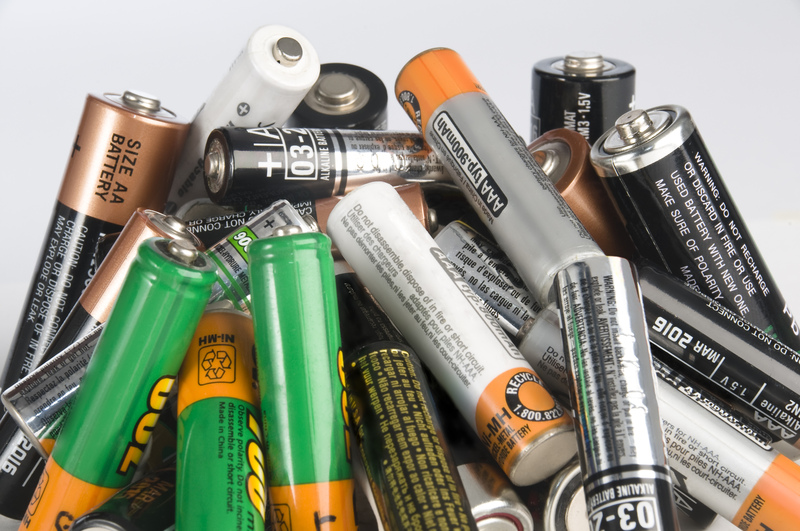Fighting Microplastic Pollution: Can We Succeed?
Microplastic pollution has emerged as one of the most challenging environmental threats of our time. These tiny particles are now found everywhere, from the deepest oceans to our drinking water. As concerns escalate and public awareness grows, the vital question remains: Can we successfully fight microplastic pollution? This comprehensive guide explores the sources, impacts, and solutions to microplastic contamination, offering a realistic perspective on our path forward.
What Are Microplastics?
To understand the urgency behind microplastic pollution control, let's first define what microplastics are. Microplastics are small plastic fragments, typically less than 5 millimeters in length. There are two main categories:
- Primary microplastics: Manufactured intentionally small for use in personal care products, industrial abrasives, or as precursors to other plastic items.
- Secondary microplastics: Result from the breakdown of larger plastic debris due to sunlight, weather, or physical forces.
Because of their size, microplastics can evade traditional filtration systems, allowing them to permeate aquatic, terrestrial, and even atmospheric environments.

Where Do Microplastics Come From?
Key Sources of Microplastic Contamination
Understanding the origins of microplastics is crucial to fighting microplastic pollution effectively. Some common sources include:
- Personal care and cosmetic products: Microbeads used in exfoliants, toothpaste, and cleansers are rinsed down drains and enter water systems.
- Textile fibers: Synthetic clothing sheds microfibers whenever it is washed, contributing significant plastic particulates to waterways.
- Tire and road wear: As vehicles move, tires and road paint erode, releasing tiny plastic particles onto roads that can be washed into drains and rivers.
- Plastic waste degradation: Larger plastic items, such as bags and bottles, break down into smaller fragments over time.
- Industrial processes: Pellets known as "nurdles" are used in plastic manufacturing and often escape into the environment during transportation or processing.
The pervasiveness of these sources means that even remote regions, such as polar areas and the deepest ocean trenches, are not spared from microplastic infiltration.
Why Is Microplastic Pollution a Major Concern?
Environmental and Health Impacts of Microplastics
Microplastics pose significant environmental and health risks:
- Threat to marine life: Many aquatic organisms mistake microplastics for food, leading to ingestion that can cause physical harm, malnutrition, and even death.
- Chemical contamination: Microplastics can absorb and concentrate toxic chemicals, including pesticides, heavy metals, and persistent organic pollutants. These chemicals can bioaccumulate through the food chain.
- Human health risks: Microplastics have been found in drinking water, seafood, salt, and even the air we breathe. Research suggests potential links to inflammation, cell damage, and the introduction of hazardous substances into human bodies.
- Impact on soil and agriculture: Microplastics in agricultural soil can disrupt plant growth, soil structure, and microbial communities essential for fertility.
- Economic costs: Contamination affects fisheries, tourism, and the broader economy through diminished ecosystem services and the need for cleanup operations.
With these widespread impacts, there is growing urgency for effective microplastic pollution management.
Global Strategies for Fighting Microplastic Pollution
Policy and Regulation
Many nations have recognized the need for legislative action. Notable examples include:
- Microbead bans: The United States, United Kingdom, Canada, and many EU countries have banned microbeads in cosmetics and cleaning products.
- Improved waste management: Countries are investing in upgraded recycling infrastructure, stricter waste disposal regulations, and the development of circular economies for plastics.
- Labels and standards: New labeling requirements for textiles and products containing microplastics help consumers make informed choices.
While policy action is crucial, inconsistent implementation and loopholes can limit effectiveness. Global coordination remains a significant challenge to combat microplastic pollution efficiently.
Innovative Technologies in Microplastic Clean-Up
Technology plays a vital role in microplastic pollution mitigation. Key innovations include:
- Advanced filtration systems: Municipal water treatment plants are piloting membrane filtration and magnetic nanotechnology to capture microplastics before they reach oceans.
- Robotics and AI for marine clean-up: Drones, autonomous boats, and machine learning algorithms are being used to detect and collect plastic waste, including microplastics, from waterways.
- Bioremediation: Scientists are exploring microorganisms and enzymes that can break down plastics in natural environments.
- Innovative textiles: New fabric technologies reduce microfiber shedding during laundering, and in-drum laundry filters are being developed for washing machines.
Research into these areas is ongoing, and while promising, scaling up technologies remains a critical hurdle for reducing microplastic pollution globally.
Global Cooperation and International Protocols
Given the transboundary nature of plastic pollution, international collaboration is essential. The United Nations and other bodies are working towards:
- Global plastics treaties: Negotiations are underway to establish legally binding agreements to reduce the production and release of plastics.
- Regional partnerships: Rivers like the Ganges and Yangtze, which deliver huge volumes of plastics to oceans, are key targets for concerted regional interventions.
- Data sharing and research coordination: Harmonizing protocols for measuring and reporting microplastics ensures that solutions are based on robust evidence.
Such initiatives are essential for ensuring that microplastic clean-up efforts are consistent and widely adopted.
Can We Prevent Microplastic Pollution at the Source?
Product Design and Material Innovation
One promising approach to fight microplastic pollution is to address it at its source. Strategies include:
- Developing biodegradable materials: Research is ongoing into alternatives to petroleum-based plastics, such as bioplastics made from algae, starch, or fungi.
- Redesigning products: Reducing packaging, creating reusable solutions, and incorporating design for recyclability all help limit microplastic formation.
- Clothing innovation: New fibers that shed less, and more durable textiles, minimize microfiber release during washing and wear.
Encouragingly, consumer demand for sustainable products is driving industry investments in these areas.
Corporate Responsibility and Circular Economy
Companies have a crucial role in microplastic prevention:
- Product stewardship: Major manufacturers are taking responsibility for their products' end-of-life, investing in take-back and recycling initiatives.
- Circular economy models: By designing products for longevity and reusability, companies reduce the volume of plastic entering the waste stream.
- Supply chain transparency: More brands are adopting traceability tools to identify and address microplastic risks along their supply chains.
These efforts, while growing, need to be scaled up globally to have a meaningful effect in dealing with microplastic pollution.
Individual Action: What Can You Do to Help?
While governments and industries are vital to microplastic pollution solutions, individual action also makes a difference. You can:
- Choose natural fibers: Prefer clothing and products made from organic cotton, wool, or other natural materials.
- Use a microplastic filter for your washing machine: Capture microfibers before they reach water supplies.
- Reduce single-use plastics: Opt for reusable water bottles, bags, and containers to minimize plastic waste creation.
- Support bans and policies: Advocate for and support legislation that addresses microplastic sources.
- Stay informed and spread awareness: Educate others about the issue and promote responsible consumption habits.
Every action counts when it comes to minimizing microplastic pollution and safeguarding our environment for future generations.
Challenges and Limitations in Microplastic Pollution Control
Technical and Economic Barriers
Despite growing efforts, several obstacles hinder our ability to succeed in the fight against microplastics:
- Scale of pollution: An estimated 11 million metric tons of plastic enter the ocean every year, and only a fraction can be recovered with current technologies.
- Fragmentation and dispersion: Microplastics are widely dispersed and diverse in chemical composition, making them difficult to detect and remove.
- Lack of regulations in many regions: Developing countries often lack resources for proper waste management and enforcement.
- High cleanup costs: Removing microplastics from the environment can be resource-intensive.
Knowledge Gaps and Scientific Uncertainty
- Limited understanding of health impacts: The long-term effects of microplastics on human health remain insufficiently researched.
- Ecological interactions: The full impact of microplastics on ecosystems, food webs, and biodiversity is still being uncovered.
- Variable monitoring methods: Lack of standardized techniques makes it hard to compare data and measure progress.
These challenges require ongoing investment in science, technology, and education to improve our understanding and response.

The Future: Can We Succeed in Fighting Microplastic Pollution?
The battle against microplastic pollution is daunting but not insurmountable. Success will depend on a multi-pronged, collaborative approach that includes:
- Stronger policy frameworks that target plastic production, use, and disposal across the lifecycle.
- Technological innovation that makes plastic alternatives and removal more accessible and cost-effective.
- Behavioral shifts among consumers, industries, and communities towards sustainable choices.
- Robust education and outreach to ensure everyone understands the importance of combating microplastic pollution.
As our understanding deepens, and as more people and organizations rally to the cause, there is real hope for reducing microplastic sources and cleaning up our ecosystems. While total elimination may not be immediately possible, we can significantly mitigate harm and set humanity on a more sustainable path.
Conclusion: A Shared Responsibility for Our Planet
Microplastic pollution underscores the interconnectedness of modern society and the natural world. Solving this crisis requires global cooperation, innovation, and collective resolve.
By supporting smarter policies, embracing new technologies, and making conscious choices in our daily lives, we each play a role in fighting microplastic pollution. The path ahead is complex, but together, we can make a measurable difference--for ourselves, for future generations, and for the vibrant diversity of life on Earth.
Let's join hands and commit to a cleaner, microplastic-free future. Can we succeed in the fight against microplastic pollution? Yes, if we act now and act together.